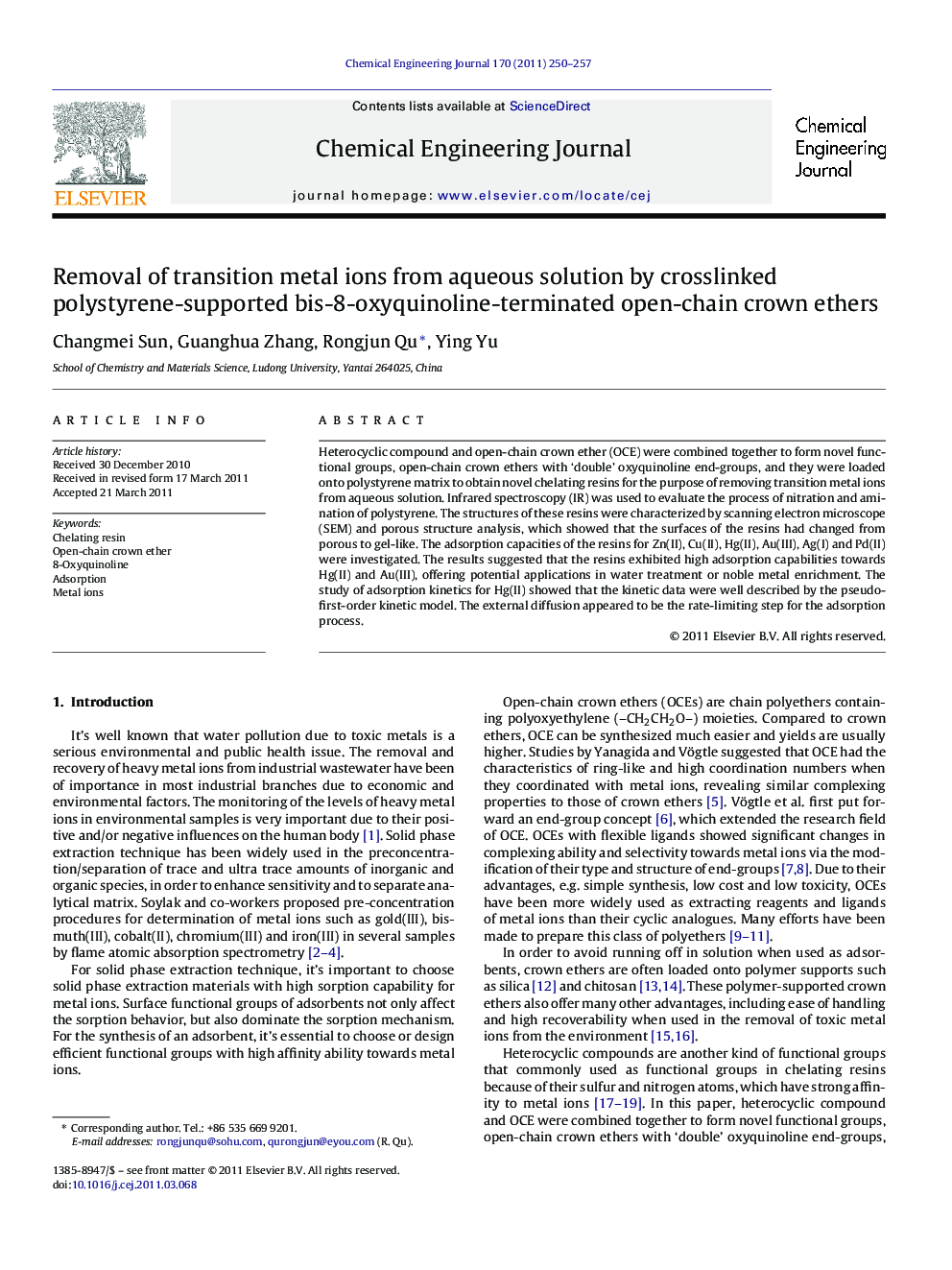| Article ID | Journal | Published Year | Pages | File Type |
|---|---|---|---|---|
| 151306 | Chemical Engineering Journal | 2011 | 8 Pages |
Heterocyclic compound and open-chain crown ether (OCE) were combined together to form novel functional groups, open-chain crown ethers with ‘double’ oxyquinoline end-groups, and they were loaded onto polystyrene matrix to obtain novel chelating resins for the purpose of removing transition metal ions from aqueous solution. Infrared spectroscopy (IR) was used to evaluate the process of nitration and amination of polystyrene. The structures of these resins were characterized by scanning electron microscope (SEM) and porous structure analysis, which showed that the surfaces of the resins had changed from porous to gel-like. The adsorption capacities of the resins for Zn(II), Cu(II), Hg(II), Au(III), Ag(I) and Pd(II) were investigated. The results suggested that the resins exhibited high adsorption capabilities towards Hg(II) and Au(III), offering potential applications in water treatment or noble metal enrichment. The study of adsorption kinetics for Hg(II) showed that the kinetic data were well described by the pseudo-first-order kinetic model. The external diffusion appeared to be the rate-limiting step for the adsorption process.
